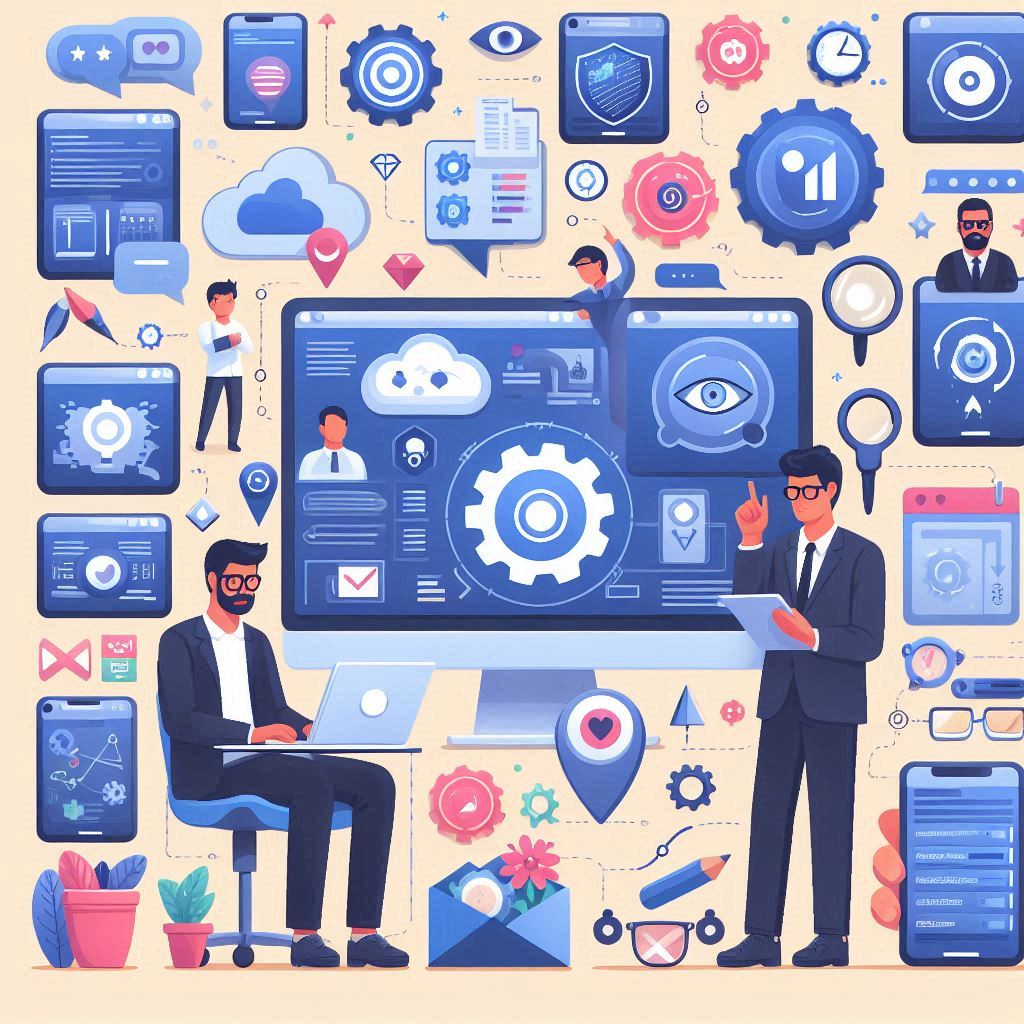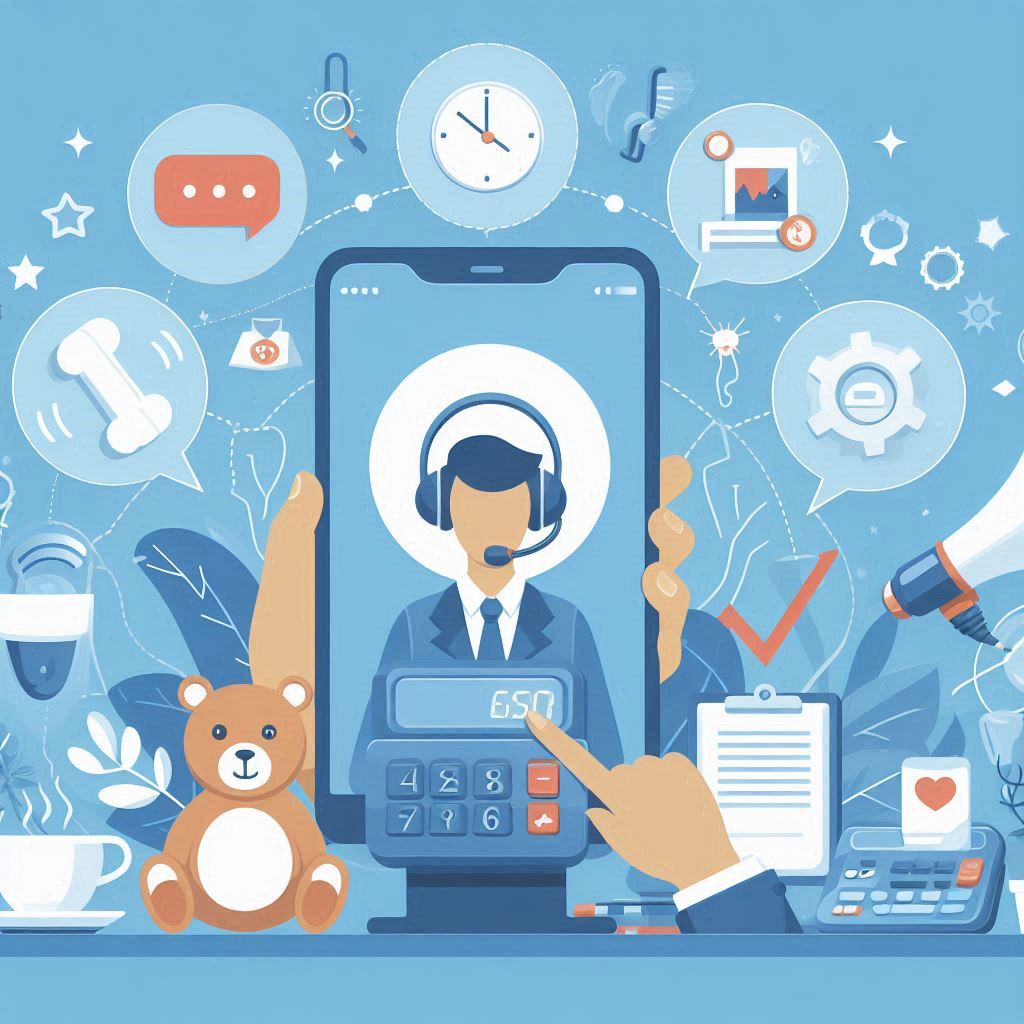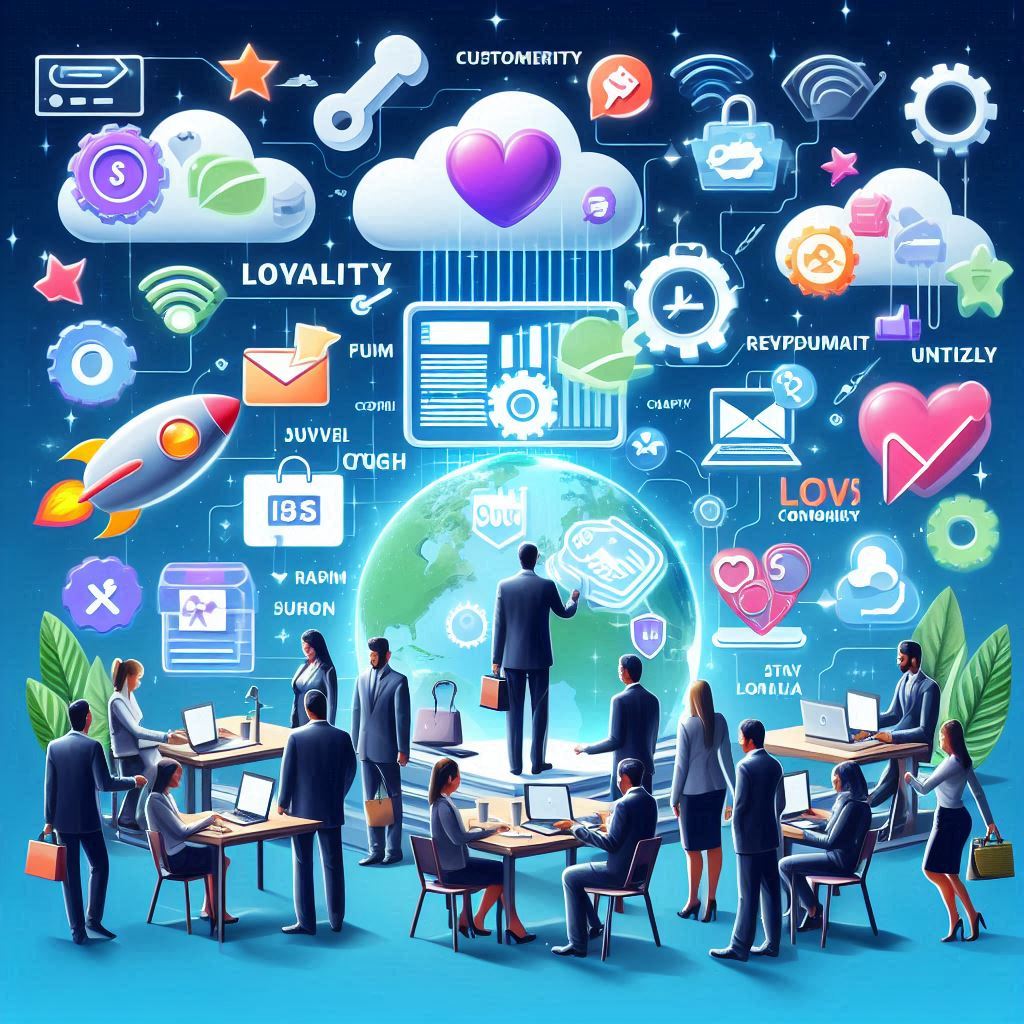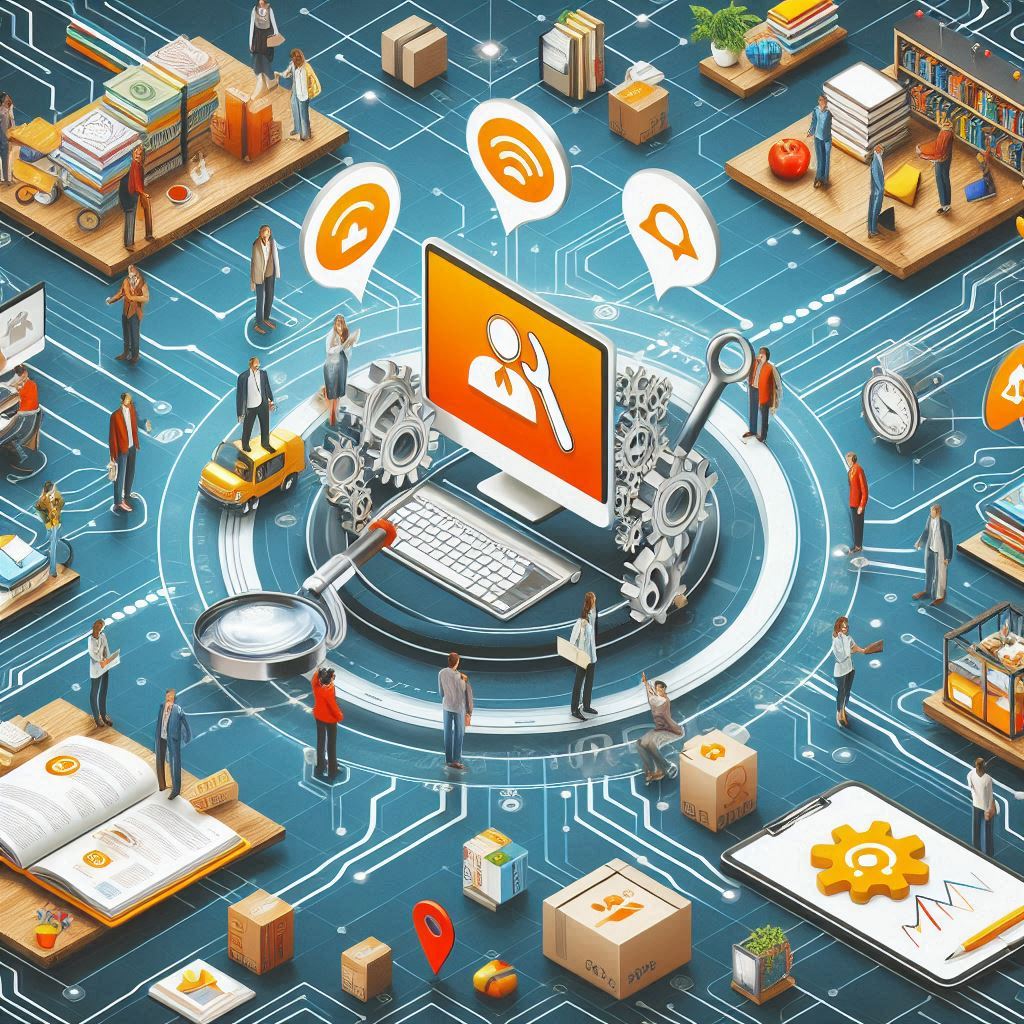How to Train Your Development Team on Customer Engagement Techniques Training your development team on customer engagement techniques is essential for building software that resonates with users and fosters positive relationships. Engaging customers effectively can lead to higher satisfaction, loyalty, and ultimately, business success. In this blog, we will explore practical steps to train your development team on customer engagement techniques, ensuring they understand how to create user-friendly and engaging software. 1. Understanding Customer Engagement Before training your team, it’s important to establish a clear understanding of what customer engagement means. 1.1. Definition of Customer Engagement Customer engagement refers to the interaction between a company and its customers throughout their journey. It encompasses all touchpoints, including marketing, sales, support, and product usage. 1.2. Importance of Customer Engagement Understanding the significance of customer engagement helps motivate your team to focus on this aspect: Customer Satisfaction: Engaged customers are more likely to be satisfied with the product. Loyalty and Retention: High engagement levels can lead to customer loyalty and reduced churn rates. Feedback Loop: Engaged customers provide valuable feedback that can inform product improvements. 2. Identifying Training Objectives Establish clear training objectives to guide the training process and measure its effectiveness. 2.1. Key Learning Outcomes Identify specific learning outcomes you want your development team to achieve: Understand the principles of customer engagement. Recognize the impact of software design on user experience. Learn techniques for gathering and incorporating user feedback. Develop empathy for users and their needs. 2.2. Skill Development Areas Focus on specific skills that are crucial for customer engagement: Communication Skills: Effective communication with users and stakeholders. User-Centered Design: Principles of designing software with the user in mind. Data Analysis: Analyzing user data to understand behavior and preferences. 3. Training Methods Utilize a variety of training methods to engage your team effectively and cater to different learning styles. 3.1. Workshops and Seminars Organize workshops and seminars led by industry experts or customer engagement specialists. Interactive Sessions: Encourage participation and discussion to facilitate learning. Case Studies: Present real-world examples of successful customer engagement strategies in software development. 3.2. Online Courses and Resources Leverage online learning platforms that offer courses on customer engagement and user experience. Recommended Platforms: Consider platforms like Coursera, Udemy, or LinkedIn Learning for relevant courses. Resource Sharing: Share articles, podcasts, and videos that provide insights into customer engagement techniques. 4. Practical Exercises and Role-Playing Incorporate practical exercises to help your development team apply what they learn. 4.1. User Persona Creation Have team members create user personas based on research data to better understand target audiences. Persona Workshops: Facilitate workshops where teams can brainstorm and develop personas collaboratively. Empathy Mapping: Use empathy mapping techniques to explore user motivations, frustrations, and needs. 4.2. Role-Playing Scenarios Conduct role-playing exercises where team members simulate customer interactions. Customer Support Simulations: Create scenarios where developers practice responding to customer inquiries or feedback. Feedback Gathering: Simulate user interviews to practice gathering feedback effectively. 5. Incorporating User Feedback Mechanisms Teach your development team how to incorporate user feedback into the software development process. 5.1. Feedback Tools and Techniques Introduce various tools and techniques for gathering user feedback: Surveys and Polls: Use tools like SurveyMonkey or Google Forms to create and distribute surveys. In-App Feedback: Implement in-app feedback mechanisms to capture user sentiments in real-time. 5.2. Data Analysis for Insights Train your team to analyze feedback data to extract actionable insights. Data Visualization: Use data visualization tools like Tableau or Google Data Studio to present feedback findings clearly. Prioritizing Feedback: Teach the team how to prioritize feedback based on user impact and feasibility for development. 6. Creating a Customer-Centric Culture Encourage a customer-centric culture within the development team. 6.1. Empathy Building Foster empathy among team members towards users. User Testimonials: Share customer testimonials and success stories to highlight the impact of the software on users. Customer Journey Mapping: Create customer journey maps to visualize user interactions and identify engagement opportunities. 6.2. Cross-Functional Collaboration Promote collaboration between development and other teams, such as marketing and customer support. Regular Check-Ins: Schedule regular meetings between departments to discuss customer insights and engagement strategies. Shared Goals: Align team goals with customer engagement objectives to encourage collective responsibility. 7. Measuring Training Effectiveness Establish metrics to assess the effectiveness of the training program. 7.1. Feedback Surveys Conduct feedback surveys after training sessions to gather insights on their relevance and usefulness. Rating Scales: Use rating scales to measure participants’ perceived value of the training. Open-Ended Questions: Include open-ended questions to capture specific suggestions for improvement. 7.2. Performance Metrics Monitor performance metrics related to customer engagement and user satisfaction post-training. User Satisfaction Scores: Track changes in user satisfaction scores to gauge the impact of training on software development. Engagement Metrics: Measure engagement metrics, such as user retention rates and feedback volume, to assess improvements. 8. Conclusion Training your development team on customer engagement techniques is essential for creating software that resonates with users and enhances their experience. By understanding customer needs, developing relevant skills, and fostering a customer-centric culture, your team can build software solutions that drive customer satisfaction and loyalty. By implementing practical exercises, incorporating user feedback mechanisms, and continuously measuring training effectiveness, organizations can ensure that their development teams remain engaged, informed, and empowered to create exceptional user experiences. Ultimately, prioritizing customer engagement in software development leads to lasting relationships and business success.
The Role of Market Research in Software Development
The Role of Market Research in Software Development Market research plays a crucial role in the software development lifecycle, guiding decision-making processes, shaping product features, and ensuring alignment with user needs. As competition intensifies in the tech industry, understanding the market landscape becomes essential for developing successful software products. This blog explores the various aspects of market research in software development and its impact on creating effective software solutions. 1. Understanding Market Research Market research is the systematic gathering, analysis, and interpretation of information about a specific market, including information about the target audience, competitors, and industry trends. In the context of software development, market research helps identify user needs, evaluate competitors, and inform product strategy. 2. The Importance of Market Research in Software Development 2.1. Identifying User Needs One of the primary benefits of market research is its ability to uncover user needs and preferences. User Interviews and Surveys: Conducting interviews and surveys allows developers to gather direct feedback from potential users about their pain points, desires, and expectations. User Personas: By analyzing research data, teams can create user personas that represent different segments of the target audience, helping to tailor features to specific user groups. 2.2. Understanding the Competitive Landscape Market research provides insights into the competitive landscape, helping developers understand how their product fits into the market. Competitor Analysis: Analyzing competitors allows teams to identify their strengths and weaknesses, offering insights into what features and strategies are working in the market. Differentiation: Understanding competitor offerings helps in defining unique selling propositions (USPs) that set the product apart, ensuring it addresses gaps in the market. 3. Informed Decision-Making Effective market research enables data-driven decision-making throughout the software development process. 3.1. Prioritizing Features With insights from market research, teams can prioritize features that align with user needs and market demand. Feature Validation: Research helps validate which features are essential for the target audience, ensuring that development efforts focus on what matters most. Roadmap Development: By aligning feature prioritization with market trends, teams can create a strategic product roadmap that guides development and marketing efforts. 3.2. Risk Mitigation Market research helps mitigate risks associated with software development. Identifying Market Trends: Understanding emerging trends allows teams to adapt their software to stay relevant, reducing the risk of developing a product that quickly becomes outdated. Early Warning Signals: Research can highlight potential issues or shifts in consumer behavior, enabling teams to pivot their strategies before launching. 4. Enhancing Marketing Strategies Market research not only informs product development but also enhances marketing strategies. 4.1. Target Audience Segmentation Through market research, teams can segment their target audience based on demographics, behaviors, and preferences. Tailored Marketing Campaigns: Understanding different segments allows for the creation of tailored marketing campaigns that resonate with specific user groups, improving engagement and conversion rates. Message Refinement: Research helps refine marketing messages to address user pain points and highlight the unique benefits of the software. 4.2. Positioning and Branding Market research aids in defining the product’s positioning and branding strategy. Brand Differentiation: By analyzing competitor branding strategies, teams can create a distinctive brand identity that appeals to the target audience. Value Proposition Development: Research helps articulate a compelling value proposition that communicates the benefits of the software to potential users. 5. Continuous Improvement and Feedback Loops Market research is not a one-time activity but an ongoing process that informs continuous improvement. 5.1. Post-Launch Feedback After launching the software, continuous market research helps gather feedback to enhance the product. User Feedback Mechanisms: Implementing feedback mechanisms, such as surveys or user interviews, allows teams to understand user satisfaction and identify areas for improvement. Analytics Monitoring: Utilizing analytics tools provides insights into user behavior, helping teams make data-driven decisions for future iterations. 5.2. Iterative Development Incorporating market research into an iterative development process allows teams to adapt to changing user needs and market dynamics. Agile Methodology: Teams can integrate market research findings into agile sprints, ensuring that user feedback is continuously considered during the development process. Feature Enhancements: Ongoing research can highlight which features need refinement or additional functionality based on user interactions and feedback. 6. Conclusion Market research is an integral part of software development that informs decision-making, enhances user understanding, and drives product success. By prioritizing user needs, analyzing the competitive landscape, and gathering ongoing feedback, software teams can create products that resonate with their target audience. As the tech industry continues to evolve, leveraging market research will be essential for staying ahead of the competition and delivering software solutions that meet the demands of users. By investing in comprehensive market research, organizations can ensure that their software development efforts lead to successful outcomes and sustained growth in an ever-changing landscape.
How to Create a Comprehensive Software Feature List Based on User Needs
How to Create a Comprehensive Software Feature List Based on User Needs Creating a software feature list that aligns with user needs is a crucial step in the software development process. A well-defined feature list ensures that the final product meets the expectations of its users, enhances user satisfaction, and achieves business goals. In this blog, we will explore the steps and best practices for creating a comprehensive software feature list based on user needs. 1. Understanding User Needs Before diving into feature creation, it’s essential to understand the user’s needs, pain points, and goals. 1.1. User Research Conducting thorough user research helps gather insights about potential users and their requirements. Surveys and Questionnaires: Create surveys to collect quantitative data about user preferences and pain points. Interviews: Conduct one-on-one interviews to gain qualitative insights into user experiences and expectations. Focus Groups: Organize focus groups to discuss specific topics and gather diverse perspectives on user needs. 1.2. Creating User Personas Develop user personas based on research findings to represent different user types and their unique needs. Demographics: Include information such as age, occupation, and technical proficiency. Goals and Challenges: Outline each persona’s goals, challenges, and how the software can help them achieve their objectives. 2. Defining Feature Categories Organizing features into categories can help streamline the feature list and make it easier to prioritize. 2.1. Core Features Identify the essential features that directly address user needs and are crucial for the software’s functionality. Must-Have Features: List features that are necessary for the software to function as intended. Competitive Analysis: Research competitors to identify industry standards for core features. 2.2. Nice-to-Have Features These are features that enhance user experience but are not critical for the software’s basic functionality. User Enhancements: Consider features that can improve usability and customer satisfaction. Differentiation: Identify features that can set your software apart from competitors. 3. Gathering Feedback on Features Once you have a draft feature list, it’s crucial to validate it with potential users. 3.1. Prototyping Create low-fidelity prototypes or wireframes to visualize how features will function. Interactive Prototypes: Use tools like Figma or Adobe XD to create clickable prototypes that simulate user interactions. User Testing: Conduct usability testing sessions to observe how users interact with the prototypes and gather feedback on the proposed features. 3.2. Feedback Sessions Organize feedback sessions to discuss the feature list with potential users and stakeholders. Workshops: Conduct workshops to review features collectively and refine the list based on user input. Online Forums: Use online platforms (e.g., Slack, Discord) to gather feedback from users who cannot attend in-person sessions. 4. Prioritizing Features Once you have a comprehensive feature list, it’s essential to prioritize features based on their importance and feasibility. 4.1. Prioritization Frameworks Utilize prioritization frameworks to categorize features according to their value and effort required. MoSCoW Method: Classify features into Must-have, Should-have, Could-have, and Won’t-have categories. Kano Model: Analyze features based on user satisfaction, categorizing them as Basic, Performance, and Excitement features. 4.2. Stakeholder Input Involve stakeholders in the prioritization process to ensure alignment with business objectives. Collaboration Sessions: Host collaboration sessions where stakeholders can discuss and rank features based on business impact. Balanced Approach: Consider both user needs and business goals when prioritizing features to create a balanced feature list. 5. Documenting the Feature List A well-organized and documented feature list will serve as a reference throughout the development process. 5.1. Feature Descriptions Provide clear and concise descriptions for each feature, outlining its purpose and functionality. User Stories: Write user stories for each feature to illustrate how users will benefit from it. For example, “As a user, I want to be able to reset my password so that I can regain access to my account quickly.” Acceptance Criteria: Define acceptance criteria for each feature to establish clear expectations for development. 5.2. Version Control Implement version control to track changes to the feature list as the project evolves. Change Log: Maintain a change log to document updates and rationale behind feature modifications. Collaboration Tools: Use tools like Trello, Jira, or Confluence for collaborative documentation and version control. 6. Iterating and Evolving the Feature List Creating a feature list is not a one-time task; it requires ongoing iteration and evolution throughout the software development lifecycle. 6.1. Agile Methodology Adopt an agile methodology that promotes continuous feedback and iteration. Sprint Reviews: Conduct regular sprint reviews to evaluate progress and gather feedback on implemented features. Adaptation: Be open to adapting the feature list based on user feedback and changing market demands. 6.2. Post-Launch Feedback After the software is launched, continue to gather user feedback to identify areas for improvement. User Analytics: Analyze user behavior and engagement metrics to understand how features are being utilized. Ongoing Surveys: Send out surveys to gather feedback on user satisfaction and potential feature requests. 7. Conclusion Creating a comprehensive software feature list based on user needs is a critical step in delivering a successful product. By conducting thorough user research, categorizing features, gathering feedback, and prioritizing effectively, organizations can develop software that meets user expectations and achieves business goals. The process of iterating and evolving the feature list ensures that the software remains relevant and valuable in an ever-changing landscape. By prioritizing user needs throughout the development process, organizations can foster a positive user experience, drive customer satisfaction, and achieve long-term success.
The Benefits of Offering Self-Service Options in Customer Support
The Benefits of Offering Self-Service Options in Customer Support In today’s fast-paced digital world, customer expectations are evolving rapidly. Customers want immediate answers to their questions, and self-service options in customer support are increasingly becoming a critical component of a successful service strategy. Offering self-service options not only enhances the customer experience but also benefits organizations in numerous ways. This blog explores the benefits of implementing self-service options in customer support. 1. Understanding Self-Service in Customer Support Self-service customer support refers to the tools and resources that allow customers to find answers to their questions and solve problems independently without needing direct assistance from a customer service representative. This can include FAQs, knowledge bases, chatbots, video tutorials, and community forums. 2. Benefits of Offering Self-Service Options 2.1. Enhanced Customer Experience Self-service options empower customers by providing them with the tools they need to resolve their issues quickly and efficiently. Immediate Access to Information: Customers can access information at any time, allowing them to find solutions without waiting for assistance. Convenience: Self-service allows customers to resolve issues at their own pace, leading to a more satisfying experience. 2.2. Cost Savings for Businesses Implementing self-service options can significantly reduce operational costs for businesses. Reduced Staffing Needs: With more customers utilizing self-service resources, the demand for live customer service representatives decreases, allowing companies to allocate resources more efficiently. Lower Support Costs: By deflecting a portion of support inquiries to self-service channels, businesses can lower the overall cost per interaction. 2.3. Increased Efficiency and Productivity Self-service options streamline customer interactions, allowing support teams to focus on more complex issues. Faster Resolution Times: Customers can find answers quickly, reducing the time spent on support inquiries. Freed-Up Resources: Support agents can dedicate more time to resolving intricate issues rather than answering repetitive questions. 2.4. Improved Customer Empowerment Self-service options empower customers by giving them control over their support experience. Knowledge Sharing: Providing access to comprehensive resources encourages customers to explore solutions independently. Self-Efficacy: Customers gain confidence in their ability to solve problems, fostering a positive perception of the brand. 3. Key Self-Service Options to Implement To maximize the benefits of self-service, businesses should consider implementing a variety of self-service options tailored to their customers’ needs. 3.1. Knowledge Base A knowledge base is a centralized repository of information that includes articles, tutorials, and FAQs. Comprehensive Resources: Ensure that the knowledge base covers a wide range of topics relevant to your customers. Search Functionality: Implement a robust search feature to help users find information quickly. 3.2. Chatbots and Virtual Assistants Chatbots provide instant responses to customer inquiries, offering a conversational interface for support. 24/7 Availability: Chatbots can assist customers at any time, ensuring support is available outside of regular business hours. Handling Common Queries: Automate responses to frequently asked questions, freeing up human agents for more complex issues. 3.3. Community Forums Community forums encourage customers to engage with each other and share knowledge. Peer Support: Users can ask questions and receive answers from fellow customers, fostering a sense of community. Crowdsourced Solutions: Allow customers to contribute to knowledge-sharing, enriching the available resources. 3.4. Video Tutorials Video tutorials can provide visual and step-by-step guidance on using products or services. Visual Learning: Many customers prefer visual content; videos can effectively demonstrate complex processes. Accessibility: Ensure videos are easily accessible on your website or support platform. 4. Measuring the Effectiveness of Self-Service Options To gauge the effectiveness of self-service options, businesses should track and analyze relevant metrics. 4.1. Usage Analytics Monitor usage analytics to understand how frequently customers utilize self-service options. Page Views and Clicks: Track how often knowledge base articles or tutorials are accessed. Chatbot Interactions: Analyze chatbot interactions to identify common queries and areas for improvement. 4.2. Customer Satisfaction Surveys Conduct surveys to gather customer feedback on their experiences with self-service options. Post-Interaction Surveys: Ask customers to rate their satisfaction with self-service options after using them. Net Promoter Score (NPS): Measure overall customer loyalty and satisfaction through NPS surveys. 5. Challenges and Considerations While self-service options offer numerous benefits, businesses should be aware of potential challenges. 5.1. Ensuring Resource Quality The effectiveness of self-service options relies on the quality and relevance of the resources provided. Regular Updates: Ensure that content is regularly updated to reflect changes in products or services. User-Friendly Design: Resources should be easy to navigate and understand, promoting a positive user experience. 5.2. Balancing Self-Service and Live Support Not all customers prefer self-service; some may still require live support for complex issues. Clear Support Channels: Ensure customers can easily access live support if needed, without feeling frustrated by their self-service experience. Feedback Mechanism: Provide a way for customers to share feedback on their self-service experience to identify areas for improvement. 6. Conclusion Offering self-service options in customer support provides numerous benefits for both customers and businesses. By enhancing customer experience, reducing costs, increasing efficiency, and empowering customers, self-service options can significantly contribute to customer satisfaction and loyalty. As businesses continue to adapt to changing customer expectations, investing in self-service solutions will be essential for providing exceptional customer support. By prioritizing the implementation and optimization of self-service options, organizations can create a more efficient and satisfying support experience for their customers.
How to Develop Software That Supports Team Collaboration
How to Develop Software That Supports Team Collaboration In an era where remote work and digital communication have become the norm, developing software that fosters team collaboration is essential for enhancing productivity and efficiency. Effective collaborative software helps teams communicate seamlessly, share resources, and work together towards common goals. This blog will guide you through the key principles and strategies for developing software that supports team collaboration. 1. Understanding the Need for Collaborative Software Collaborative software, often referred to as groupware or collaboration tools, allows team members to work together regardless of their physical location. The need for such software has grown due to the following factors: Remote Work Trends: The rise of remote work has highlighted the importance of tools that facilitate communication and collaboration across distances. Global Teams: Organizations are increasingly hiring talent from around the world, necessitating tools that bridge geographical gaps. Increased Project Complexity: Modern projects often involve multiple stakeholders, making effective collaboration crucial for success. 2. Key Features of Collaborative Software To develop software that effectively supports team collaboration, it’s important to incorporate specific features that enhance communication and productivity. 2.1. Real-Time Communication Effective collaboration relies on seamless communication. Incorporating real-time chat features allows team members to communicate instantly, reducing delays in decision-making. Messaging Tools: Integrate messaging platforms (e.g., Slack, Microsoft Teams) for quick communication. Video Conferencing: Include options for video calls to facilitate face-to-face interactions, fostering better understanding and engagement. 2.2. File Sharing and Storage Easy access to shared files and resources is critical for collaboration. Implementing a robust file-sharing system enables team members to access, edit, and collaborate on documents in real time. Cloud Storage Integration: Utilize cloud storage solutions (e.g., Google Drive, Dropbox) for secure file storage and sharing. Version Control: Incorporate version control features to keep track of changes and ensure that team members work on the latest version of documents. 2.3. Task Management A collaborative platform should include task management features that allow teams to organize and track their work efficiently. Task Assignment: Enable users to assign tasks to team members, set deadlines, and monitor progress. Kanban Boards: Implement visual project management tools, like Kanban boards, to help teams visualize their workflows and manage tasks effectively. 2.4. Integration with Other Tools To enhance productivity, collaborative software should integrate with other tools and platforms that teams use. Third-Party Integrations: Allow integration with tools like project management software (e.g., Trello, Asana) and calendars (e.g., Google Calendar) for streamlined workflows. APIs: Provide APIs for developers to create custom integrations that fit specific team needs. 3. User-Centric Design Principles A user-friendly interface is vital for ensuring that team members can navigate the software easily and effectively. 3.1. Intuitive Navigation Design an intuitive navigation system that allows users to find features quickly without a steep learning curve. Clear Menus and Icons: Use recognizable icons and clear menus to guide users through the software. User Onboarding: Implement onboarding tutorials to help new users familiarize themselves with the platform’s features. 3.2. Customization Options Allow users to customize their experience to fit their preferences and workflows. Personal Dashboards: Enable users to create personalized dashboards that highlight the information most relevant to them. Flexible Notifications: Offer customizable notification settings to help users manage alerts according to their preferences. 4. Encouraging Team Engagement To foster a collaborative culture, the software should encourage engagement among team members. 4.1. Feedback Mechanisms Incorporate features that allow team members to provide feedback on projects, tasks, and the software itself. Commenting Systems: Enable users to leave comments on tasks and documents, facilitating discussions and feedback. Surveys and Polls: Implement tools for conducting surveys and polls to gather team input on decisions and improvements. 4.2. Recognition and Rewards Incorporate features that allow teams to recognize and celebrate each other’s contributions. Recognition Tools: Allow team members to acknowledge each other’s efforts through badges or shout-outs. Achievements and Milestones: Create systems that track and display team achievements, fostering a sense of accomplishment. 5. Security and Privacy Considerations With the rise of remote work, ensuring the security and privacy of team communications and data is paramount. 5.1. Data Encryption Implement encryption protocols to protect sensitive data shared within the platform. End-to-End Encryption: Use end-to-end encryption for communications to ensure that only intended recipients can access messages. Secure File Sharing: Ensure that file sharing is secure, with options for permissions and access controls. 5.2. User Access Controls Establish user access controls to protect sensitive information and restrict access based on roles. Role-Based Access: Create role-based access controls that limit what different team members can view or edit based on their responsibilities. Audit Trails: Implement audit trails to track user activity, providing transparency and accountability. 6. Testing and Iteration Once the software is developed, it’s crucial to conduct thorough testing and iterate based on user feedback. 6.1. User Testing Conduct user testing sessions to identify usability issues and gather insights on the user experience. Beta Testing: Launch a beta version of the software to a select group of users to gather feedback before the full release. Focus Groups: Organize focus groups to discuss features, usability, and potential improvements. 6.2. Continuous Improvement Adopt an iterative development approach that incorporates user feedback for ongoing improvements. Agile Methodology: Use agile practices to release regular updates, addressing user concerns and introducing new features based on feedback. Feedback Loops: Create feedback loops where users can continually share their experiences and suggestions for improvement. 7. Case Studies of Successful Collaborative Software Example 1: Slack Slack has become a leader in team collaboration software by focusing on real-time communication and integration with other tools. Its intuitive interface, along with features like channels and direct messaging, enables teams to collaborate effectively. Example 2: Microsoft Teams Microsoft Teams integrates seamlessly with other Microsoft 365 applications, allowing teams to collaborate on projects, share files, and communicate through chat and video calls. Its robust task management features make it a comprehensive solution for team collaboration. 8. Conclusion Developing software that supports team collaboration is essential for enhancing productivity and efficiency in
Understanding the Impact of UX Design on Customer Loyalty
Understanding the Impact of UX Design on Customer Loyalty User Experience (UX) design has become a critical factor in determining customer loyalty in today’s competitive market. As customers increasingly demand high-quality interactions with brands, businesses must prioritize UX design to foster strong relationships and encourage repeat business. This blog explores the relationship between UX design and customer loyalty, highlighting key principles and strategies to enhance customer experiences. 1. What is UX Design? UX design refers to the process of enhancing user satisfaction by improving the usability, accessibility, and pleasure provided in the interaction between the user and the product. It encompasses all aspects of the user’s interaction with a company, its services, and its products. 2. The Importance of UX Design for Customer Loyalty 2.1. First Impressions Matter The first interaction a customer has with a product significantly influences their perception of the brand. A well-designed interface creates a positive first impression, which is crucial for establishing trust and encouraging users to return. Intuitive Navigation: A clear and intuitive navigation structure helps users find what they need quickly, enhancing their initial experience. Visual Appeal: An aesthetically pleasing design can evoke positive emotions and create a memorable experience. 2.2. Consistency Builds Trust Consistency across all touchpoints—websites, apps, and customer service—reinforces brand identity and fosters trust among customers. Brand Recognition: Consistent UX design helps users recognize and relate to the brand, making them more likely to return. Familiarity: When users encounter familiar design elements, they feel more comfortable navigating the platform, leading to increased loyalty. 2.3. User-Centric Design Enhances Satisfaction Designing products with the user in mind leads to a more satisfying experience. When customers feel that their needs are prioritized, they are more likely to develop loyalty to the brand. Personalization: Tailoring experiences to meet individual user preferences enhances satisfaction and encourages repeat visits. Feedback Incorporation: Actively seeking and implementing user feedback shows that the brand values customer input, leading to a stronger emotional connection. 3. The Role of UX Design in Building Customer Loyalty 3.1. Ease of Use A product that is easy to use significantly contributes to customer loyalty. If users encounter obstacles during their interaction, they may abandon the product in favor of a competitor. Simplified Processes: Streamlining processes, such as checkout or registration, minimizes frustration and enhances user experience. Clear Calls to Action: Effective UX design includes clear calls to action, guiding users effortlessly through their journey. 3.2. Engagement Through Interaction Effective UX design encourages engagement, which is vital for building customer loyalty. Engaged customers are more likely to return and recommend the product to others. Interactive Elements: Features such as quizzes, polls, and gamification elements can enhance user engagement and create a more dynamic experience. Community Building: Designing spaces for community interaction fosters a sense of belonging, encouraging customers to stick around. 3.3. Mobile Responsiveness With the increasing use of mobile devices, ensuring a seamless experience across different platforms is essential for maintaining customer loyalty. Responsive Design: A responsive design adapts to various screen sizes and resolutions, providing a consistent experience regardless of the device. Mobile Optimization: Optimizing mobile experiences can significantly impact user satisfaction and loyalty, especially for users who primarily access services via their smartphones. 4. Measuring the Impact of UX Design on Customer Loyalty To understand the effectiveness of UX design in fostering customer loyalty, organizations should implement metrics and analytics. 4.1. Customer Satisfaction Surveys Regularly conducting customer satisfaction surveys can help gauge user perceptions of the UX design and its impact on loyalty. Net Promoter Score (NPS): This metric measures customer willingness to recommend the product to others, providing insights into overall loyalty. Customer Effort Score (CES): This metric assesses how easy it is for customers to achieve their goals using the product, highlighting areas for improvement. 4.2. User Analytics Utilizing user analytics tools can help organizations track user behavior and identify patterns related to engagement and loyalty. Heatmaps: Tools like heatmaps can show where users click most often, helping teams understand which elements engage users. Session Recordings: Analyzing session recordings can provide insights into user struggles, informing UX improvements. 5. Best Practices for Enhancing UX Design to Boost Customer Loyalty 5.1. Conduct User Research Regularly conduct user research to understand customer needs, preferences, and pain points. This informs design decisions and ensures that the product aligns with user expectations. 5.2. Iterate Based on Feedback Establish a feedback loop where users can share their thoughts on the UX. Use this information to make iterative improvements, ensuring that the product evolves with customer needs. 5.3. Focus on Accessibility Designing for accessibility ensures that all users, including those with disabilities, can enjoy the product. This inclusivity can enhance customer loyalty and broaden the user base. 5.4. Invest in Quality Testing Conduct thorough testing before launching new features or updates. This ensures that potential issues are identified and addressed, leading to a smoother user experience. 6. Case Studies of Successful UX Design and Customer Loyalty Example 1: Apple Apple’s commitment to intuitive and user-friendly design has established a loyal customer base. The seamless integration of hardware and software, along with consistent updates, fosters user loyalty and repeat purchases. Example 2: Amazon Amazon’s focus on a streamlined shopping experience, including features like one-click purchasing and personalized recommendations, has resulted in high customer satisfaction and loyalty. The company continuously gathers feedback to refine its UX. 7. Conclusion In an increasingly competitive landscape, effective UX design is vital for fostering customer loyalty. By prioritizing user-centric design principles, organizations can create memorable experiences that lead to increased satisfaction and repeat business. Understanding the impact of UX design on customer loyalty and actively implementing best practices will help businesses build lasting relationships with their customers. As customer expectations evolve, investing in exceptional UX design will be a key differentiator for brands looking to succeed in the long term.
How to Enhance Software Performance Through Customer Feedback
How to Enhance Software Performance Through Customer Feedback In today’s competitive software landscape, delivering high-quality products that meet user expectations is essential. Customer feedback plays a crucial role in this process, providing insights that can lead to improved software performance. By actively seeking and analyzing feedback, development teams can identify areas for enhancement, optimize user experiences, and ultimately drive customer satisfaction. This blog explores effective strategies to leverage customer feedback for enhancing software performance. 1. Understanding the Importance of Customer Feedback Customer feedback is an invaluable resource that can guide software development and improvement efforts. It encompasses users’ opinions, suggestions, and experiences related to a software product. Benefits of Customer Feedback: Identifies Performance Issues: Users can highlight specific performance issues they encounter, helping teams address them promptly. Enhances User Satisfaction: By responding to feedback, companies can create a more satisfying user experience, leading to higher retention rates. Informs Future Development: Feedback can guide future feature development, ensuring that new functionalities align with user needs. 2. Methods for Collecting Customer Feedback To effectively enhance software performance, organizations must implement robust methods for collecting customer feedback. Feedback Collection Methods: Surveys and Questionnaires: Use surveys to gather structured feedback on specific features, usability, and performance. Tools like SurveyMonkey or Google Forms can help. User Interviews: Conduct one-on-one interviews to gain in-depth insights into user experiences and gather qualitative feedback. Usability Testing: Observe users interacting with the software to identify pain points and areas for improvement. Support Channels: Monitor customer support interactions to gather insights on common issues and concerns raised by users. In-App Feedback Tools: Implement in-app feedback tools, like pop-up surveys or rating systems, to collect real-time feedback from users while they use the software. 3. Analyzing Customer Feedback Once feedback is collected, the next step is to analyze it effectively to identify trends and actionable insights. Steps for Analysis: Categorize Feedback: Organize feedback into categories, such as performance issues, feature requests, and usability concerns. This helps in prioritizing areas for improvement. Use Analytical Tools: Leverage analytical tools to identify patterns in feedback. Tools like sentiment analysis can help gauge user emotions and satisfaction levels. Prioritize Issues: Focus on high-impact issues that affect a significant number of users. Use metrics like frequency of feedback and severity of issues to prioritize enhancements. 4. Implementing Changes Based on Feedback After analyzing customer feedback, it’s time to implement changes that enhance software performance. Strategies for Implementation: Agile Development Practices: Adopt agile methodologies to iterate on software improvements quickly. Regular sprints can help integrate feedback into the development process efficiently. Feature Roadmaps: Create a feature roadmap that incorporates user-requested enhancements and performance optimizations. Testing and Validation: Before rolling out changes, conduct thorough testing to ensure that enhancements address the identified issues without introducing new problems. 5. Communicating Changes to Customers Effective communication with customers about the changes made based on their feedback is crucial for building trust and engagement. Communication Strategies: Release Notes: Publish detailed release notes that outline the changes made, improvements in performance, and how customer feedback influenced these decisions. Email Updates: Send email updates to customers highlighting key improvements and inviting them to share further feedback on the changes. Community Engagement: Engage with customers through forums or social media to discuss updates and gather additional insights. 6. Creating a Continuous Feedback Loop To continually enhance software performance, it’s essential to establish a continuous feedback loop with customers. Continuous Feedback Strategies: Regular Check-Ins: Schedule regular check-ins with users to solicit feedback on their experiences with the software. Iterative Updates: Implement iterative updates that allow for ongoing improvements based on fresh feedback. Customer Advisory Boards: Consider forming customer advisory boards consisting of key users who can provide insights and feedback on upcoming features and performance enhancements. 7. Measuring the Impact of Changes To evaluate the effectiveness of changes made based on customer feedback, it’s important to measure the impact on software performance. Measurement Metrics: Performance Metrics: Monitor key performance metrics, such as load times, response times, and error rates, to assess the impact of changes. User Satisfaction Surveys: Conduct follow-up surveys to gauge user satisfaction after implementing enhancements. Engagement Analytics: Analyze user engagement metrics to determine whether changes lead to increased usage and satisfaction. 8. Case Studies of Success Examining successful case studies can provide valuable insights into how customer feedback has led to significant software performance improvements. Example 1: Slack Slack uses customer feedback to refine its user interface and performance. By regularly soliciting feedback from users, the company was able to identify areas for improvement, leading to enhancements in load times and user experience. Example 2: Dropbox Dropbox actively engages its users through surveys and feedback forms. This approach has helped the company prioritize features that enhance collaboration and performance, resulting in a more user-friendly product. 9. Conclusion Enhancing software performance through customer feedback is a vital process that can lead to higher user satisfaction and improved product quality. By implementing effective feedback collection methods, analyzing insights, and making informed changes, organizations can create software that meets user expectations and adapts to their needs. Establishing a continuous feedback loop ensures that software performance remains a top priority, fostering long-term relationships with customers and driving business success. In a rapidly evolving market, leveraging customer feedback effectively is a powerful strategy for maintaining a competitive edge.
The Importance of Time Management in Software Projects
The Importance of Time Management in Software Projects Time management is a critical component of any successful software project. It involves planning, organizing, and executing tasks efficiently to meet deadlines and achieve project goals. Effective time management not only improves productivity but also enhances team collaboration, reduces stress, and ensures the timely delivery of high-quality software products. In this blog, we will explore the significance of time management in software projects and provide strategies to enhance it. 1. Understanding Time Management in Software Development Time management in software development refers to the process of allocating and utilizing time effectively throughout the project lifecycle. This includes planning tasks, estimating timeframes, prioritizing activities, and tracking progress to ensure that deadlines are met. 2. Benefits of Effective Time Management 2.1. Improved Productivity Efficient time management leads to increased productivity among team members. By clearly defining tasks and deadlines, teams can focus on high-priority activities and avoid distractions. Task Prioritization: Identifying and prioritizing tasks helps teams focus on what’s most important. Reduced Procrastination: Clear timelines reduce procrastination and encourage timely execution of tasks. 2.2. Enhanced Quality of Work When teams manage their time effectively, they can allocate sufficient time for testing and quality assurance, leading to higher-quality software products. Thorough Testing: Sufficient time allows for comprehensive testing, reducing the likelihood of bugs and errors in the final product. Iterative Improvements: Time management enables teams to make iterative improvements based on feedback, enhancing overall quality. 2.3. Better Resource Allocation Effective time management helps in the optimal allocation of resources, ensuring that team members are utilized efficiently. Balanced Workload: Proper planning helps distribute work evenly among team members, preventing burnout and ensuring that everyone contributes effectively. Identifying Skill Gaps: It allows project managers to identify skill gaps and allocate tasks based on team members’ strengths. 2.4. Reduced Stress Levels Well-managed projects lead to a more relaxed work environment, reducing stress and improving team morale. Clear Expectations: Team members have a better understanding of what is expected of them, leading to reduced anxiety about meeting deadlines. Increased Job Satisfaction: A well-organized project can enhance job satisfaction, as team members can see their contributions leading to tangible results. 2.5. Timely Delivery of Projects One of the most significant benefits of effective time management is the ability to deliver projects on time, which is crucial for maintaining client satisfaction and securing future business. Meeting Deadlines: Timely delivery strengthens client trust and enhances the organization’s reputation in the industry. Competitive Advantage: Organizations that consistently deliver projects on time gain a competitive edge over their rivals. 3. Strategies for Effective Time Management in Software Projects 3.1. Set Clear Goals and Objectives Establishing clear goals and objectives at the outset of a project is crucial for effective time management. This helps the team understand what they are working toward. SMART Goals: Ensure that goals are Specific, Measurable, Achievable, Relevant, and Time-bound. Project Scope Definition: Clearly define the project scope to avoid scope creep, which can lead to time overruns. 3.2. Create a Detailed Project Plan A detailed project plan outlines tasks, timelines, and responsibilities, serving as a roadmap for the project. Gantt Charts: Use Gantt charts to visualize the project timeline, tasks, and dependencies. Task Breakdown: Break down larger tasks into smaller, manageable sub-tasks to make progress easier to track. 3.3. Prioritize Tasks Effectively Prioritizing tasks based on urgency and importance ensures that the team focuses on high-impact activities. Eisenhower Matrix: Use the Eisenhower Matrix to categorize tasks into four quadrants: urgent and important, important but not urgent, urgent but not important, and neither urgent nor important. Agile Methodologies: Implement agile methodologies to prioritize tasks based on user feedback and changing project requirements. 3.4. Utilize Time Tracking Tools Time tracking tools can help teams monitor their progress and identify areas for improvement. Time Management Software: Use tools like Trello, Asana, or Jira to track tasks, deadlines, and progress. Regular Check-Ins: Hold regular check-ins to review progress, discuss challenges, and adjust timelines as needed. 3.5. Encourage Collaboration and Communication Effective collaboration and communication among team members are essential for managing time efficiently. Daily Stand-Ups: Implement daily stand-up meetings to discuss progress, blockers, and plans for the day. Open Communication Channels: Foster open communication channels through tools like Slack or Microsoft Teams to facilitate quick discussions and problem-solving. 3.6. Implement Continuous Improvement Practices Encourage a culture of continuous improvement to identify and address inefficiencies in the development process. Retrospectives: Conduct retrospectives at the end of each sprint or project phase to evaluate what went well and what can be improved. Feedback Loops: Establish feedback loops to gather insights from team members on time management practices and project processes. 4. Overcoming Common Time Management Challenges Despite the best efforts, challenges in time management can arise. Here are some common challenges and how to overcome them: 4.1. Scope Creep Scope creep occurs when additional features or changes are requested after the project has started, leading to delays. Change Control Process: Implement a change control process to evaluate the impact of new requests on the project timeline. Stakeholder Communication: Maintain open communication with stakeholders to manage expectations regarding scope changes. 4.2. Unforeseen Delays Unforeseen delays can disrupt project timelines, making it essential to have contingency plans in place. Buffer Time: Build buffer time into the project schedule to accommodate unexpected delays. Risk Management: Identify potential risks early and develop mitigation strategies. 4.3. Team Member Availability Availability issues due to illness, vacations, or other commitments can impact project timelines. Resource Planning: Plan for resource availability and cross-train team members to ensure coverage during absences. Flexibility: Encourage flexibility in task assignments to accommodate changes in team member availability. 5. Conclusion Effective time management is vital for the success of software projects. By prioritizing tasks, creating detailed project plans, and fostering collaboration, teams can enhance productivity, improve the quality of work, and ensure timely delivery of software products. Overcoming common challenges and implementing best practices will further strengthen time management efforts, leading to more successful software projects and satisfied
How to Use Customer Stories to Inspire Software Development
How to Use Customer Stories to Inspire Software Development In an era where customer-centricity drives business success, leveraging customer stories can be a powerful tool for inspiring software development. These narratives provide invaluable insights into user needs, preferences, and pain points, guiding teams to create solutions that resonate with their target audience. This blog will explore effective strategies to harness customer stories in software development, fostering innovation and enhancing user satisfaction. 1. Understanding the Value of Customer Stories Customer stories are real-life accounts of how users interact with a product or service. They reveal the context in which users operate, their challenges, and the outcomes they desire. Understanding their value is crucial for software development teams. Benefits of Customer Stories: User-Centric Insights: They provide a direct line of sight into user needs and behaviors. Inspiration for Features: Stories can inspire new features or improvements by highlighting gaps in existing solutions. Empathy Building: They foster empathy among development teams, reminding them of the human impact of their work. 2. Collecting Customer Stories The first step in using customer stories is gathering them effectively. There are several methods to collect valuable narratives. Methods for Collection: Interviews: Conduct one-on-one interviews with customers to explore their experiences and gather in-depth stories. Surveys: Utilize surveys to solicit feedback and stories from a broader audience. Social Media Monitoring: Monitor social media channels and forums for customer feedback and testimonials. User Reviews: Analyze reviews on platforms like app stores or third-party review sites to uncover stories that highlight user experiences. 3. Creating Personas from Customer Stories Once customer stories are collected, the next step is to synthesize this information into user personas. Personas represent archetypal users based on shared characteristics derived from multiple stories. Steps to Create Personas: Identify Common Themes: Look for patterns and themes in the collected stories, such as common pain points or goals. Develop Detailed Profiles: Create detailed profiles that include demographics, goals, challenges, and preferred features. Use Personas in Development: Incorporate these personas into the software development process to ensure alignment with user needs. 4. Incorporating Customer Stories into the Development Process Integrating customer stories into the development process can enhance collaboration and creativity among team members. Ways to Integrate: Story Mapping: Use story mapping techniques to visualize customer journeys and identify opportunities for improvement in the software. Inspiration Sessions: Organize brainstorming sessions where teams share and discuss customer stories to inspire new ideas and features. User Story Writing: Write user stories that capture the essence of customer narratives, focusing on their goals and challenges. This helps in prioritizing features based on user impact. 5. Prototyping and Testing with Customer Stories Using customer stories as a basis for prototyping and testing can lead to more effective solutions. Prototyping Strategies: Create Low-Fidelity Prototypes: Develop low-fidelity prototypes based on customer stories and personas, allowing for rapid iterations and feedback. User Testing: Involve customers in testing these prototypes to gather feedback and validate assumptions, ensuring that the final product aligns with user needs. 6. Encouraging a Customer-Centric Culture Fostering a customer-centric culture within the development team is essential for leveraging customer stories effectively. Cultural Strategies: Story Sharing Sessions: Regularly hold sessions where team members share customer stories, fostering a sense of connection and purpose. Recognition and Reward: Recognize and reward team members who actively incorporate customer feedback and stories into their work. Continuous Feedback Loops: Establish continuous feedback loops with customers to ensure their voices remain integral to the development process. 7. Evaluating Impact and Success After integrating customer stories into software development, it’s crucial to evaluate the impact of these efforts. Evaluation Metrics: User Satisfaction: Measure user satisfaction through surveys and feedback after implementing features inspired by customer stories. Feature Adoption Rates: Track the adoption rates of new features to determine if they address customer needs effectively. Retention Rates: Analyze customer retention rates to see if improvements lead to higher loyalty and engagement. 8. Iterating Based on Customer Feedback Using customer stories should not be a one-time effort; instead, it should be part of an iterative process that continuously improves the software. Iterative Strategies: Regular Feedback Sessions: Conduct regular feedback sessions with users to gather insights on how the software meets their needs. Refinement of Features: Use feedback to refine existing features and address any emerging pain points, ensuring that the software evolves alongside customer expectations. 9. Showcasing Customer Stories for Marketing In addition to inspiring development, customer stories can be powerful marketing tools that showcase the software’s impact on real users. Marketing Strategies: Case Studies: Develop detailed case studies highlighting how the software has helped customers achieve their goals, showcasing specific features. Testimonials: Use customer testimonials on websites and promotional materials to build trust and credibility with potential users. Conclusion Using customer stories to inspire software development is a powerful strategy that can lead to more user-centric solutions and enhanced customer satisfaction. By collecting and analyzing these narratives, creating personas, integrating stories into the development process, and fostering a customer-centric culture, organizations can ensure that their software meets the evolving needs of users. Ultimately, leveraging customer stories not only enhances the development process but also strengthens the bond between businesses and their customers, driving long-term success in an increasingly competitive market.
The Benefits of Integrating Help Desks with Software Applications
The Benefits of Integrating Help Desks with Software Applications In today’s digital landscape, effective customer support is essential for maintaining user satisfaction and loyalty. Integrating help desks with software applications can significantly enhance the overall customer experience, streamline operations, and improve communication between users and support teams. In this blog, we will explore the numerous benefits of integrating help desks with software applications and how this synergy can drive business success. 1. Centralized Communication Integrating help desks with software applications centralizes all customer interactions into one platform, eliminating the need for users to switch between multiple tools. Benefits: Improved Efficiency: Support agents can access customer information and history quickly, enabling them to respond to inquiries faster and more effectively. Consistent Communication: Centralized communication ensures that customers receive consistent and accurate information, reducing confusion and miscommunication. 2. Enhanced Customer Experience A seamless integration between help desks and software applications enhances the overall customer experience by providing users with easy access to support resources. Benefits: Self-Service Options: Integrated help desks can offer self-service options, such as FAQs and knowledge bases, allowing customers to find answers independently. Faster Response Times: With integrated systems, support teams can respond to queries more rapidly, resulting in shorter wait times and increased customer satisfaction. 3. Automated Ticket Management Integration allows for automated ticket management, streamlining the process of logging and tracking customer issues. Benefits: Increased Productivity: Automation reduces the time spent on manual ticket entry, allowing support agents to focus on resolving issues rather than administrative tasks. Prioritization of Issues: Automated systems can categorize and prioritize tickets based on urgency, ensuring that critical issues are addressed promptly. 4. Comprehensive Customer Insights Integrating help desks with software applications provides support teams with valuable insights into customer behavior and preferences. Benefits: Data-Driven Decisions: Access to customer data allows teams to make informed decisions regarding support strategies and product improvements. Personalized Support: Support agents can tailor their responses based on customer history and preferences, leading to a more personalized experience. 5. Improved Collaboration Integration fosters better collaboration between different teams, such as support, development, and sales, by providing a unified view of customer interactions. Benefits: Cross-Functional Communication: Teams can share information and insights easily, facilitating collaboration on complex issues that require input from multiple departments. Faster Resolution: Improved collaboration leads to quicker problem-solving, as teams can work together to address customer concerns. 6. Scalability and Flexibility Integrated help desk solutions are often more scalable and flexible than standalone systems, allowing businesses to adapt to changing customer needs. Benefits: Easier Onboarding: New team members can quickly get up to speed with an integrated system, reducing training time and improving overall team efficiency. Adaptation to Growth: As a business expands, integrated help desk solutions can grow with it, accommodating increased support demands without sacrificing quality. 7. Enhanced Reporting and Analytics Integration provides access to comprehensive reporting and analytics tools, allowing businesses to monitor performance and identify areas for improvement. Benefits: Performance Metrics: Businesses can track key performance indicators (KPIs), such as response times and resolution rates, to evaluate support effectiveness. Identifying Trends: Analytics can help identify recurring issues and trends, enabling businesses to proactively address common problems and enhance their products or services. 8. Integration with Other Tools Integrated help desks can seamlessly connect with other business tools, such as CRM systems, project management software, and marketing platforms. Benefits: Holistic View: This integration provides a holistic view of customer interactions across different touchpoints, enhancing overall customer relationship management. Streamlined Workflows: By connecting help desks with other tools, businesses can create streamlined workflows that reduce manual data entry and improve overall efficiency. 9. Increased Customer Loyalty A seamless and efficient customer support experience fosters loyalty and encourages customers to continue using a company’s products or services. Benefits: Customer Retention: Satisfied customers are more likely to remain loyal to a brand, leading to increased retention rates and long-term profitability. Positive Word-of-Mouth: Happy customers are more likely to recommend a brand to others, driving new business through positive word-of-mouth marketing. 10. Proactive Support Integrating help desks with software applications allows for proactive support strategies, enabling businesses to identify and address potential issues before they escalate. Benefits: Predictive Analytics: By analyzing customer data, businesses can anticipate common issues and proactively address them, improving customer satisfaction. Continuous Improvement: Proactive support strategies allow businesses to continuously improve their products and services based on customer feedback and insights. Conclusion Integrating help desks with software applications offers numerous benefits that can significantly enhance customer support and overall business performance. From centralized communication and improved collaboration to comprehensive customer insights and proactive support, the advantages of integration are clear. As businesses continue to navigate the complexities of customer support in the digital age, investing in integrated help desk solutions will be crucial for maintaining customer satisfaction and driving long-term success. Ultimately, an integrated approach not only benefits customers but also empowers support teams to deliver exceptional service and foster loyalty in an increasingly competitive marketplace.











